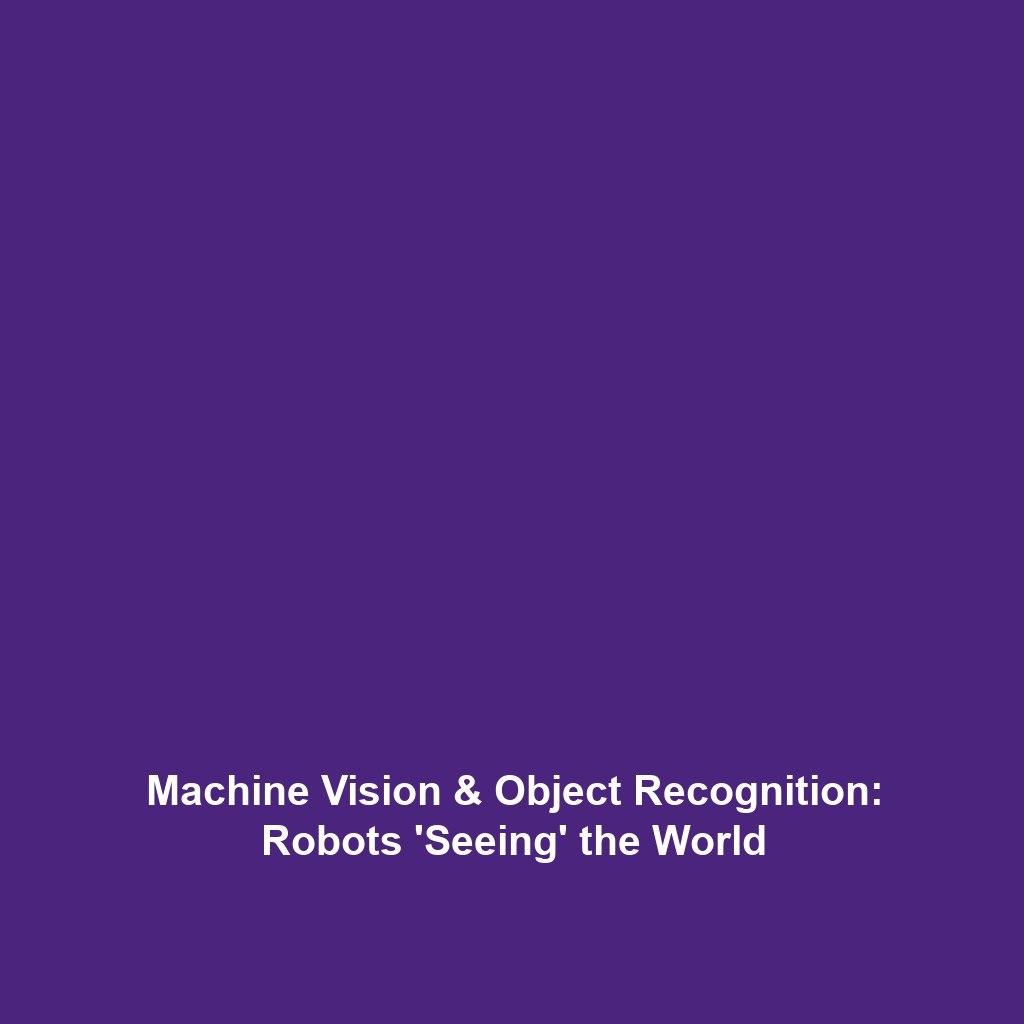Object Recognition Technologies in Humanoid Robots
Introduction
Object recognition technologies are becoming increasingly vital in the development of humanoid robots. These technologies empower robots to understand, identify, and manipulate objects within their surroundings. As robots are expected to coexist and collaborate with humans, their ability to recognize and interact with everyday objects has significant implications for various sectors, including healthcare, manufacturing, and domestic environments. This article delves into how object recognition technologies facilitate movement through various environments while underlining their importance in the evolution of humanoid robots.
Key Concepts
Understanding Object Recognition
At its core, object recognition involves using algorithms and sensors to detect objects in real-time, allowing robots to interpret their environments. Key concepts in object recognition technologies used in humanoid robots include:
- Computer Vision: The ability of robots to process visual data from cameras or sensors.
- Machine Learning: Techniques that enable robots to learn from data and improve recognition accuracy over time.
- Sensor Integration: The use of various sensors (e.g., LiDAR, cameras) to enhance the robot’s perception capabilities.
Applications and Real-World Uses
The applications of object recognition technologies in humanoid robots are vast. They include:
- Healthcare: Robots can assist in medical facilities by recognizing objects like medicine bottles and tools.
- Manufacturing: Robotics in factories utilize these technologies for assembly line processes, enhancing productivity.
- Home Automation: Humanoid robots can manage home environments by recognizing household items, making them effective personal assistants.
These examples underline how object recognition technologies are essential in shaping the future of humanoid robots.
Current Challenges
Despite significant advancements, several challenges persist in implementing object recognition technologies in humanoid robots:
- Environmental Variability: Difficulty in maintaining accuracy in different lighting conditions and complex surroundings.
- Dynamic Interaction: Challenges in recognizing and responding to swiftly changing environments.
- Data Limitations: The need for extensive training data to improve recognition algorithms effectively.
Future Research and Innovations
Innovations in object recognition technologies are paving the way for more advanced humanoid robots. Notable areas of research include:
- Enhanced AI Algorithms: Research into deep learning models that can improve performance in diverse environments.
- Sensor Technology Advancements: Development of more sophisticated sensors that provide better data input for recognition.
- Collaborative Robotics: Studies focusing on enabling robots to work alongside humans, requiring advanced object interaction capabilities.
Conclusion
Object recognition technologies are crucial for the evolution of humanoid robots, enabling them to manipulate objects and navigate effectively within their environments. As various industries adopt advancements in these technologies, the potential for humanoid robots to serve human needs becomes increasingly realistic. For further exploration on the intersection of robotics and artificial intelligence, consider reading our related articles on future technologies and robotics in healthcare.


